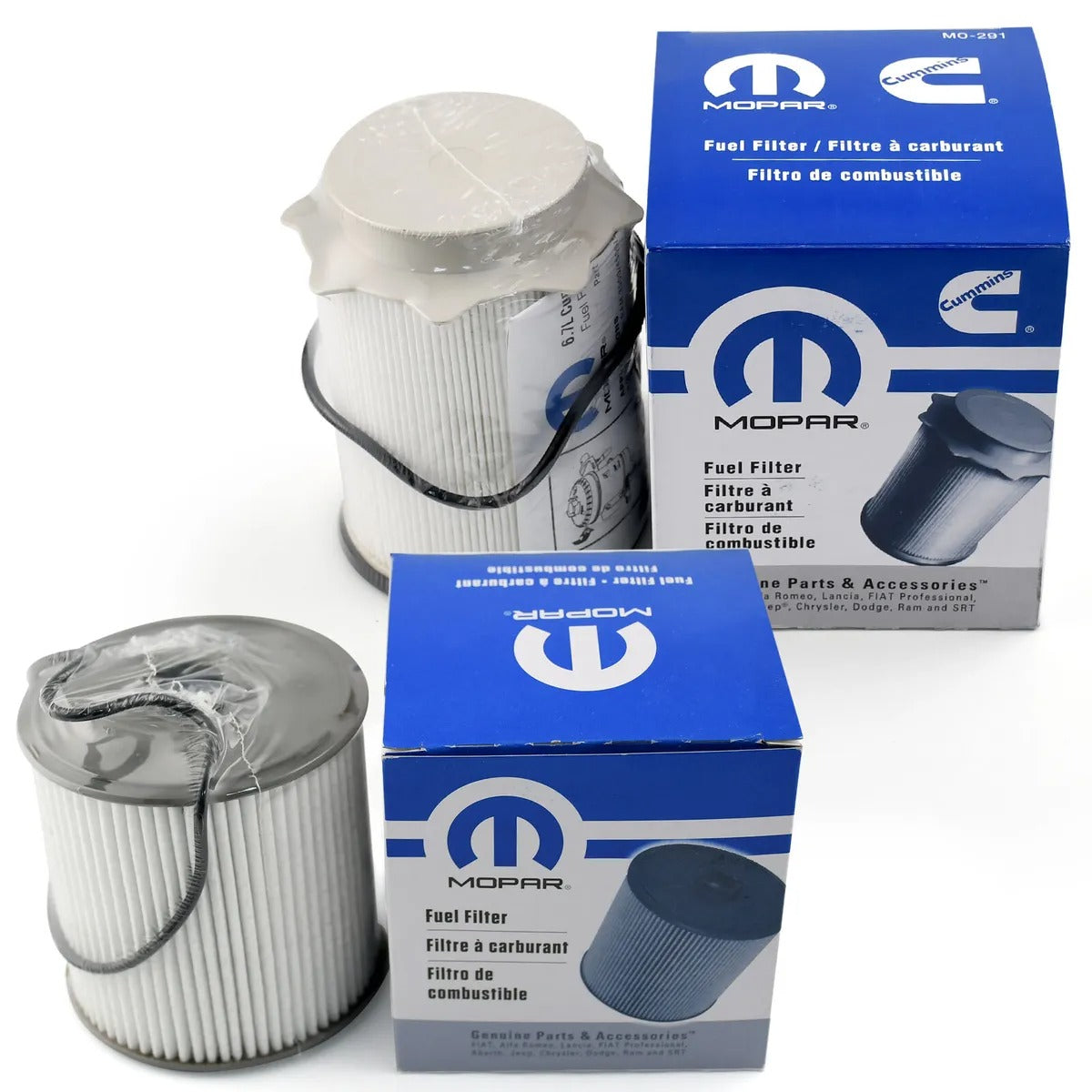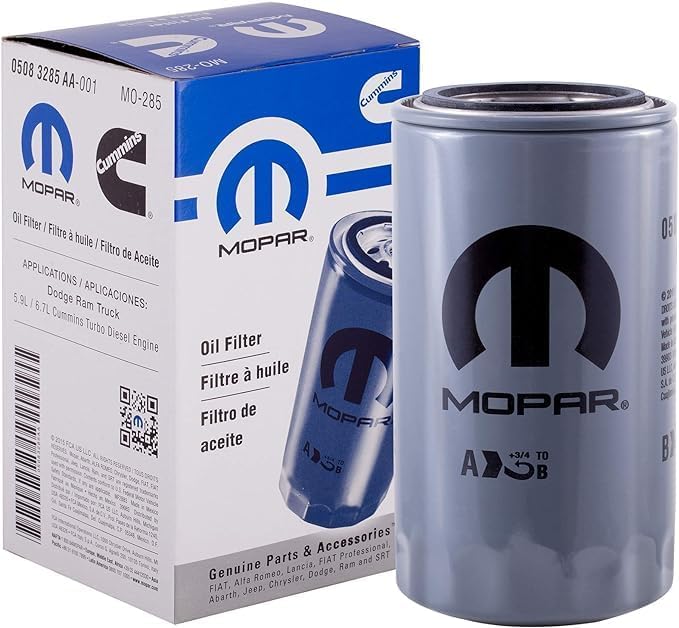Mopar
Mopar 2019-2024 Dodge Ram 2500-5500 6.7L Cummins Fuel And Oil Kit – OEM
Mopar 2019-2024 Dodge Ram 2500-5500 6.7L Cummins Fuel And Oil Kit – OEM
Couldn't load pickup availability
Mopar 2019-2024 Ram 6.7L Cummins Fuel & Oil Filter Service Kit
(68157291AA, 68436631AA, 05083285AA)
Stop overpaying at the dealership and protect your 5th Gen 6.7L Cummins with the ultimate maintenance solution. This all-in-one kit provides every OEM Quality Mopar filter you need for a complete fuel and oil service, ensuring factory-spec protection and peak performance for your Ram truck. This bundle is the definitive choice for the DIY owner who demands uncompromising quality and value.
- COMPLETE 3-FILTER SERVICE KIT: Includes all three required OEM filters for your next scheduled maintenance: one engine-mounted fuel filter (68157291AA), one chassis-mounted fuel/water separator (68436631AA), and one engine oil filter (05083285AA).
- GUARANTEED OEM QUALITY MOPAR PARTS: Eliminate the risk of counterfeit filters from questionable online sources. We supply only factory-OEM Mopar parts to guarantee perfect fitment, function, and peace of mind.
- PROTECT YOUR HIGH-PRESSURE FUEL SYSTEM: Defend your engine's most critical and expensive components. Mopar's advanced NanoNet and multi-stage filtration are engineered specifically to protect the sensitive injectors and high-pressure fuel pump from catastrophic failure due to contaminants.
- SAVE TIME AND MONEY: Get everything you need for your next service in one convenient box at a better value than buying separately. Empower yourself to perform the maintenance and save hundreds compared to a single dealership visit.
- INCLUDES OUR ULTIMATE DIY INSTALLATION GUIDE: Don't just buy the parts—master the job. Scroll down for our exclusive, detailed step-by-step guide to changing all three filters, compiled from technical data and real-world owner experiences.
Vehicle Compatibility
Confirmed Vehicle Fitment
| Year | Make | Model | Engine |
|---|---|---|---|
| 2019-2024 | Ram | 2500 | 6.7L Cummins Turbo Diesel |
| 2019-2024 | Ram | 3500 | 6.7L Cummins Turbo Diesel |
| 2019-2024 | Ram | 4500 | 6.7L Cummins Turbo Diesel |
| 2019-2024 | Ram | 5500 | 6.7L Cummins Turbo Diesel |
The Mopar Advantage
Protect Your Investment: Why OEM Filtration is Non-Negotiable
The 6.7L Cummins engine in your Ram is a significant investment, and its modern common-rail fuel system is its lifeblood. Operating at immense pressures, this system is incredibly sensitive to microscopic contaminants and water in the fuel. For 2019-2020 models equipped with the CP4.2 high-pressure fuel pump, and all subsequent models, the quality of fuel filtration is not just a recommendation—it is a critical necessity. A failure in this pump can send metal debris throughout the entire fuel system, leading to a repair bill that can easily run into thousands of dollars, requiring the replacement of the pump, fuel lines, fuel rail, and all six injectors.
Using unverified, aftermarket filters is a gamble that can have devastating consequences. OEM Quality Mopar filters are engineered by Fleetguard specifically for the Cummins engine, providing the precise micron rating and water separation capabilities required to prevent this type of catastrophic failure. This kit provides the factory-specified defense your truck needs, ensuring longevity and trouble-free operation.
Component Deep Dive
-
Engine-Mounted Fuel Filter (Mopar 68157291AA): This is the final and most crucial stage of fuel filtration. Located in the engine bay, it features advanced NanoNet technology in a proprietary two-stage design. A 5-micron outer filter captures larger particles, while a 3-micron inner filter traps the smallest, most damaging contaminants before they can reach your injectors. This level of filtration is essential for protecting the high-pressure fuel system and ensuring the longevity of its components.
-
Chassis-Mounted Fuel Separator (Mopar 68436631AA): As the first line of defense, this filter is mounted on the frame rail near the fuel tank. Its primary role is to remove damaging water and larger debris from the fuel. For 2019 and newer Ram trucks, this high-efficiency filter features a 2-micron rating, effectively stripping water from the diesel fuel to prevent corrosion and protect the entire fuel system downstream.
-
Engine Oil Filter (Mopar 05083285AA): A proven and reliable component, this oil filter has been the OEM choice for Cummins engines for decades. It uses high-quality cellulose media to effectively remove harmful particulates and sludge from your engine oil, preventing premature wear on bearings, lifters, and other critical internal components. While other filters exist, this Mopar filter is guaranteed to meet the OEM specifications for flow rate and filtration required for your engine's warranty and long-term health.
Share






